What nurses can learn from the uniforms and ceremonies of other healthcare professions.
“WHAT DOES AN RN LOOK LIKE?”When I was asked that question by a student, I didn’t immediately answer because describing an RN today in terms a nonclinician understands is difficult. I’ve talked about dress codes before and nurses’ lack of compliance with them (myamericannurse.com/dress-codes-matter/). One of the most important issues is that when you walk into many nursing units, clinics, or surgi-centers, you can’t tell the RNs from any other caregivers. Nursing is losing its identity and the professionalism that goes with it, unless we individually and collectively try to change that fate.


With a grant from the Arnold P. Gold Foundation of New York, the University of North Texas Health Science Center celebrated its first White Coat Ceremony in August 1996. The ceremony has become a tradition that’s never missed and is considered a rite of passage for medicine, pharmacy, and college of health professions students. It’s described as an important component of scholarship that encourages a person’s psychological contract toward professionalism and empathy.It’s also a way to emphasize the importance of the foundations that support the entire organization’s mission: education, research, patient care, and service.
The ceremony takes place in a large auditorium in front of family, friends, and faculty. After the university president and deans welcome incoming students, an eminent role model who embodies character and integrity throughout a career in healthcare gives a speech. Students are then presented individually and “cloaked” with their first white coat, symbolizing the mantle of their chosen profession. The students recite a professional oath in front of the assembled group as a public acknowledgment of new responsibilities and a willingness to assume the obligations of their chosen profession.
The white coat is explained as a symbolic, nonverbal communication used to express and reaffirm a fundamental belief in a system. The authority of a profession’s attire is considered serious and purposeful, not social, causal, or at random. In the past, the dress of healers of primitive societies was considered an important part of the articles used for healing. And today, the“uniform” should reflect the professionalism of the person wearing it and convey to even the most anxious patient a sense of reassurance and confidence that his or her issues will be dealt with competently.The white coat is described as a cloak of compassion.
Every student who participated in that ceremony holds his or her head high and exhibits a sense of professionalism that’s indescribable. Yet that sense is dulled if their clinical rotations are in hospitals that lack dress codes. How did we let that happen?
Although nursing is considered one of the most trusted professions, we still struggle with the consistent image that depicts the trust and caring that defines us.White uniforms, polished white shoes, and caps are long gone, so let’s not make the “uniform” a source of tension. But perhaps some other standard is needed.What would standardization of nursing’s image across all 3.6 million RNs practicing in the United States look like? What is the “white coat ceremony” equivalent for all nursing programs?
If we knew the answers, then responding to the question “What does an RN look like?” wouldn’t be so hard. How would you answer that question?


Lillee Gelinas, MSN, RN, CPPS, FAAN
Editor-in-Chief
Selected references
Clavelle JT, Goodwin M, Tivis LJ. Nursing professional attire: Probing patient preferences to inform implementation. J Nurs Adm. 2013;43(3):172-7.
Dumont C, Tagnesi K. Nursing image: What research tells us about patients’ opinions. Nursing2011. 2011;41(1):9-11.
Everett LQ. On changing RN uniform color: May the bridges I burn light the way. Nurse Leader. 2012;10(6):34-5.
West MM, Wantz D, Campbell P, Rosler G, Troutman D, Muthler C.Contributing to a quality patient experience: Applying evidence based practice to support changes in nursing dress code policies. Online J Issues Nurse. 2016;21(1):4.
Windle L, Halbert K, Dumnet C, Tagnesi K, Johnson K. An evidence-based approach to creating a new nursing dress code. Am Nurse Today. 2008;3(1):17-19.
ant12-Gelinas-1126





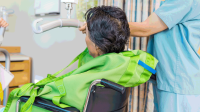
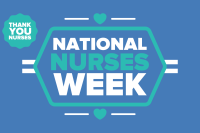
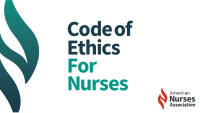




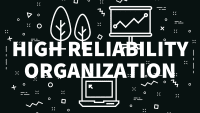

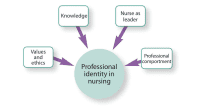


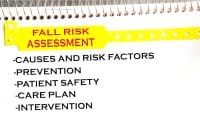

3 Comments.
I agree with both posters above. But, I would add that the profession of nursing has always suffered from sexism and continues to do so. Most RNs must wear scrubs. Now, scrubs are worn everywhere, by housekeepers, by workers in many other service jobs, by staff in the cafeteria, and even, in many cases, by incarcerated people. Think about that. Scrubs are worn in many clinics. They are very close to being pajamas. This is why they are used to clothe inmates–they are cheap to make and they would not allow an inmate to travel far without notice. So, I ask: Is this the dress of a profession? Leaving behind the white uniforms, blue capes, and white caps was an attempt to escape the bonds of sexism, and in the effort to “raise” the professional image to that which equals nursing’s contribution, scrubs now fail more terribly than the white hats ever did. Scrubs are required by dress codes in most organizations. Our professional nurses are now forced to wear pajamas and the clothing of inmates. I would argue that at this time in our society, white coats signify professionalism. I am not saying that we should copy MDs–they simply were one of the first professions to arrive at the white coat. I believe that to be considered equal in professionalism, we should wear the white coat–and not only should NPs wear it. Professional RNs working in the clinic should wear professional clothing, rather than scrubs, and when working with patients they should wear the coat, just as physicians, researchers, and pharmacists, etc., do. If working in the hospital ward, scrubs make sense. If rounding, the coat should be worn over scrubs. If running back and forth between procedures in a clinic, scrubs would be worn under the coat when in the clinic. When society has reached equality, perhaps, an individual way forward might be discerned.
It is interesting to me that the ceremony you describe includes medicine, pharmacy and “college of heath professions”. Where is nursing in this example? Have we already lost our identity as a profession so thoroughly that we cannot be distinguished?
As we consider how to visualize/image ourselves, we must consider a solution that is racially diverse, gender neutral, and ethnically acceptable (i.e., those whose religion or ethnic origin requires covering their head). We also must include multiple settings where nurses practice: hospitals, homes, clinics, occupational settings.
Isn’t there a master’s degree or doctoral student who would like to research this??? 🙂
Each of us probably holds in our heads an image of a nurse that was built around our respective experiences with one who may have cared for us or, a loved one, at some point in our lives. Or, it may simply be a more stereotypical image of uniformed nurses as we’ve come to know them through the media when we see them in any one of a variety of prime-time television dramas. However, how one “professional nurse” views another in the everyday healthcare environment will ultimately determine what image nurses will have going forward. My fear is, just as the lines of distinction have begun to blur in the public sectors with the disintegration of respect for uniformed authority figures or, the growing preference for “business casual” in what once was a “shirt and tie” work environment, we have made choices which will ultimately only lead to the further deterioration of how we visualize our ourselves and our professionalism.